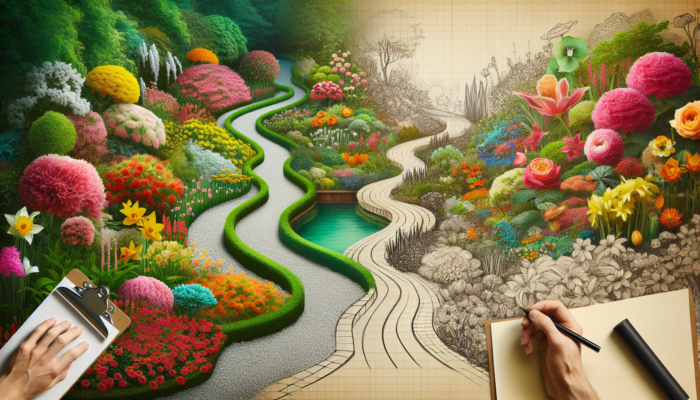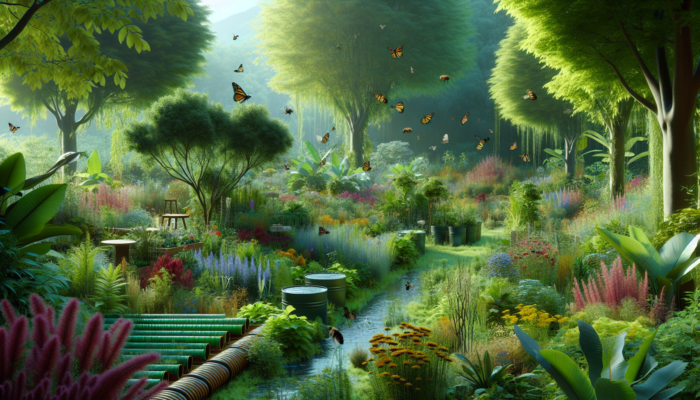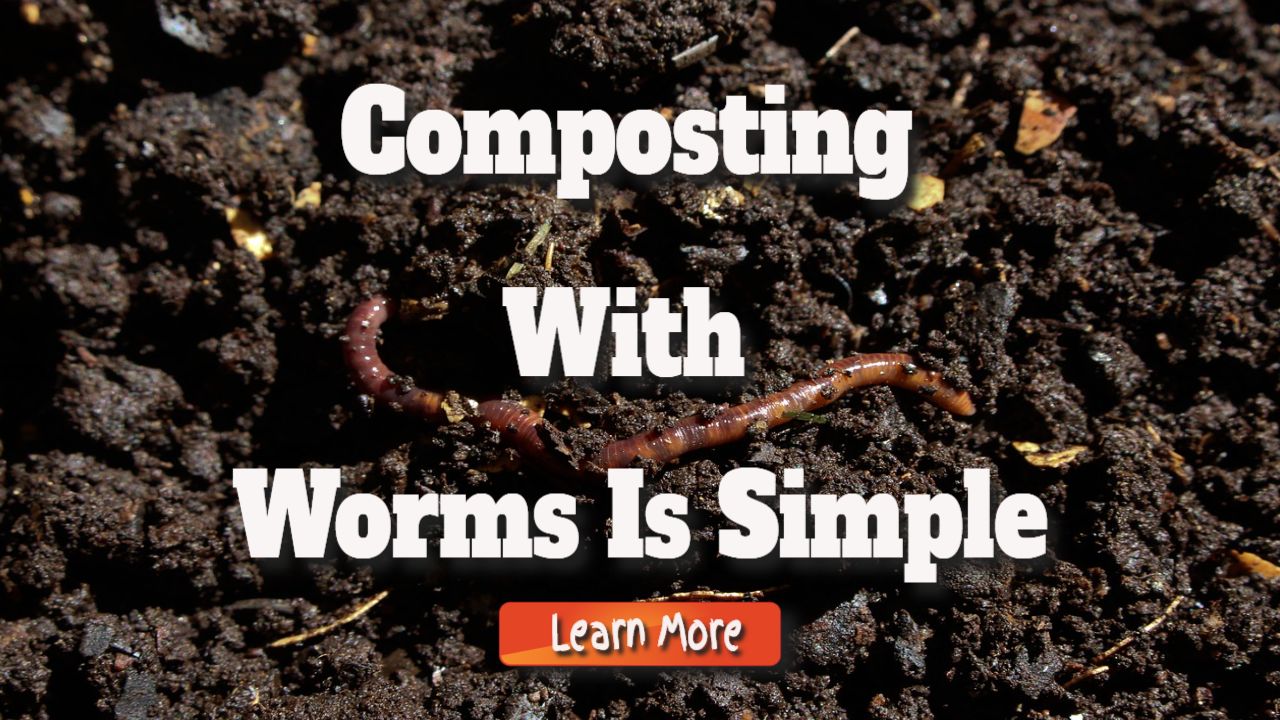Garden: A Paradise for Your Senses
Contents
- 1 Transform Your Life with a Garden: Embrace the Essence of Nature
- 2 Garden Design: From Vision to Paradise
- 3 Garden Maintenance: Strategies for a Flourishing Outdoor Haven
- 4 Choosing the Right Garden Furniture: Comfort and Style Outdoors
- 5 Enchanting Outdoor Spaces: The Importance of Garden Lighting
- 6 Gardens as a Playground for Children: A Space for Exploration
- 7 Gardens and the Environment: Focusing on Sustainability
- 8 The Therapeutic Benefits of Gardening: Healing Through Nature
- 9 Integrating Technology into Your Garden: Modern Solutions for Garden Care
- 9.1 Benefits of Smart Garden Systems
- 9.2 Automating Gardening Care: A Growing Trend
- 9.3 Future Trends in Gardening Technology
- 9.4 FAQs: Your Gardening Questions Answered
- 9.4.1 How often should I water my garden?
- 9.4.2 Which plants are best for beginners?
- 9.4.3 How can I combat pests naturally?
- 9.4.4 What are the best plants for shady gardens?
- 9.4.5 How do I compost?
- 9.4.6 What are the benefits of a vertical garden?
- 9.4.7 How can I make my garden more eco-friendly?
- 9.4.8 What are the best garden furniture options for small gardens?
- 9.4.9 How can I involve children in gardening?
- 9.4.10 What technological solutions exist for garden care?
- 9.5 Connect with us on Facebook!
Transform Your Life with a Garden: Embrace the Essence of Nature
The significance of a garden is immeasurable. In a fast-paced world often filled with chaos and stress, a garden serves as a sanctuary where individuals can reconnect with nature and rejuvenate their spirits. The essence of green living is reflected in how a garden enriches not only our aesthetic appreciation but also enhances our physical and mental well-being. By cultivating a personal green space, we foster a holistic lifestyle that promotes tranquillity, creativity, and a profound connection to our environment.
Unlocking the Power of Gardens: Enhancing Well-Being and Promoting Relaxation

A garden transcends being merely a space for plant life; it embodies a peaceful haven that profoundly impacts our overall well-being. Research indicates that spending time in nature, especially within a garden, effectively reduces stress levels and elevates mood. Engaging in gardening activities can have therapeutic effects, as they necessitate mindfulness and presence, calming the mind and clarifying thoughts.
Working in a garden, whether by planting vibrant flowers or harvesting fresh vegetables, encourages physical activity and contributes to improved fitness levels. The tactile experience of connecting with the earth and witnessing the growth of plants instils a sense of accomplishment and satisfaction. These activities positively influence mental health by alleviating anxiety and depression, creating a balanced emotional environment.
Moreover, a garden can function as a social space where families and friends gather. Shared outdoor activities strengthen social bonds and cultivate a sense of community. A well-designed garden invites people to spend time outdoors, whether it’s for barbecuing, playing games, or simply unwinding with a good book. The garden becomes a vibrant backdrop for creating lasting memories and connections.
Elevate Your Quality of Life: The Transformative Benefits of a Garden
Quality of life is influenced by various factors, and the role of a garden is pivotal in this complex interplay. A thoughtfully planned and maintained garden not only beautifies the physical environment but also significantly alters the lifestyle of its inhabitants.
Firstly, the opportunity to harvest fresh fruits and vegetables from one’s own garden not only enhances overall well-being but also improves dietary habits. Homegrown produce is not only tastier but also nutrient-rich, as it can be consumed immediately after harvest. This connection to food and the cultivation process fosters awareness of healthy eating and sustainable practices.
Secondly, a garden plays a crucial role in enhancing air quality. Plants naturally filter pollutants from the air and produce oxygen, contributing to a healthier living space. In urban areas where air pollution poses serious challenges, gardens serve as green lungs that cleanse and refresh the surrounding environment.
Thirdly, a garden represents a canvas for personal expression. Whether it’s experimenting with diverse plant species, designing landscapes, or mastering new gardening techniques, a garden encourages creativity and self-actualization. It becomes a reflection of individual personality and values, significantly enriching the overall quality of life.
Integrating Gardens into Modern Architecture: A New Paradigm
In contemporary architecture, the garden is increasingly regarded as an integral component of residential and commercial spaces. The importance of gardens in architectural design extends far beyond mere aesthetic appeal; they are essential elements that enhance quality of life and promote ecological sustainability.
Modern architectural concepts often incorporate vertical gardens and rooftop gardens into their designs. These innovative approaches not only maximize available space but also encourage biodiversity in urban environments. Vertical gardens can transform wall surfaces into lush green sanctuaries that are visually stunning while also providing insulation, thereby reducing energy consumption.
Furthermore, the garden is becoming increasingly popular in the design of residential complexes. Community gardens and landscaping that promote social cohesion are commonly found in modern housing projects. These gardens offer residents opportunities to connect, share experiences, and spend quality time outdoors.
In summary, the garden is not merely a luxury in modern architecture; it is a necessity. It contributes to improved quality of life, fosters health, and helps mitigate environmental burdens in urban areas.
Garden Design: From Vision to Paradise

Creating a garden demands both creativity and strategic planning. From the initial concept to execution, numerous considerations must be taken into account to develop a harmonious and functional space.
Essential Steps to Kickstart Your Garden Planning Journey
The journey of planning a garden begins with a clear vision. What do you aim to achieve? Are you looking for a tranquil escape, a play area for children, or a vegetable patch? The initial steps in garden planning should always be centred on your individual needs and desires.
It is crucial to analyse the existing spaces. Factors such as light conditions, soil quality, and the topography of the land must be considered. A location with excessive shade may not be suitable for sun-loving plants, while an overly sunny spot could be inappropriate for shade-loving varieties.
Another important aspect of planning involves selecting an appropriate design. Do you prefer a formal garden characterised by clear lines and symmetry, or do you favour a natural, informal style? Your design choice will significantly be influenced by your taste and the intended experience you wish to create.
Key Considerations for Selecting the Right Plants for Your Garden
Choosing the right plants is critical to the success of your garden. Several factors need to be evaluated to ensure that the plants thrive and harmonise with one another.
First, consider the climatic conditions of your region. Plants that thrive in one area may struggle to survive in another. Pay attention to USDA plant hardiness zones to select suitable species.
In addition to climate adaptation, soil quality must also be a priority. Some plants require well-drained soil, while others flourish in heavier, moisture-retentive soils. Conducting a soil analysis can help determine nutrient levels and pH values, maximising your plant selection.
Another vital aspect is the flowering period. To maintain year-round visual interest, choose plants with varied blooming times and colours. A thoughtful combination of evergreen plants, spring bloomers, and autumn foliage can create a dynamic and vibrant garden.
Designing a Sustainable Garden: Tips for Eco-Friendly Gardening

Creating a sustainable garden is not only environmentally friendly but also cost-effective. Sustainability in the garden means conserving natural resources and promoting biodiversity.
A crucial initial step is selecting native plants. These species are often better adapted to local conditions, require less water, and are less susceptible to pests. Native plants also support local wildlife by providing habitats for pollinators like bees and butterflies.
Utilising rainwater is another key aspect of a sustainable garden. By collecting rainwater, you can support your garden’s water supply while reducing reliance on municipal water sources.
Finally, incorporating composting into your gardening practices is essential. Using organic waste to create compost enhances soil quality and minimises waste. The compost provides valuable nutrients that promote plant growth while reducing the need for chemical fertilisers.
Garden Maintenance: Strategies for a Flourishing Outdoor Haven
Maintaining a garden is an ongoing task that requires both patience and commitment. However, with the right strategies and techniques, any garden can blossom into a thriving paradise.
Fundamentals of Plant Care for Healthy Growth
The foundation for successful garden maintenance lies in proper watering, fertilisation, and plant care. Regular watering is vital, especially during the growing season. It’s essential not only to water the plants but also to ensure that water penetrates deep into the soil to promote strong root development.
Fertilisation also plays a central role. Utilising organic fertilisers can enhance soil fertility and promote healthy plant growth. Be mindful when adjusting fertiliser types based on the specific needs of various plant species.
Weed control is another important aspect of garden maintenance. Weeds compete for nutrients and water, hindering your plants’ growth. Regular weeding and mulching are effective methods to keep weeds at bay while preserving soil moisture.
Seasonal Garden Tasks: Keeping Your Garden Thriving Year-Round
Garden maintenance includes not only daily tasks but also seasonal responsibilities that contribute to the health and beauty of your garden. In spring, it’s time to prepare the soil, plant new specimens, and divide perennials. Be sure to wait until after the last frost to bring frost-sensitive plants outdoors.
During summer, focus on watering and pruning. Regular pruning encourages growth and flowering while helping maintain plant health. Mulching to retain moisture is also crucial during this time.
As autumn arrives, it’s essential to prepare your garden for the colder months. Remove dead plants and tidy up beds to prevent disease and pests. Adding compost or mulch can protect the soil during winter and prepare it for the next growing season.
Effective Natural Pest Control Strategies
Controlling pests in the garden doesn’t always require chemical solutions. Numerous natural methods are both effective and environmentally friendly.
One of the simplest and most sustainable approaches is to encourage beneficial insects that feed on pests. Insects such as ladybirds, hoverflies, and certain birds are natural predators of many pests. Planting flowers that attract these beneficial creatures can significantly reduce pest populations in your garden.
Another option is to use natural sprays made from plant extracts. Neem oil and soap sprays are examples of organic insecticides that can help combat pests without harming the environment.
Finally, it’s crucial to implement preventive measures. Regular monitoring and promoting healthy plants can help ensure that pests do not become a problem in the first place. A robust garden is less susceptible to infestations and diseases.
Choosing the Right Garden Furniture: Comfort and Style Outdoors
Selecting the appropriate Garden furniture is essential for creating a comfortable and inviting outdoor space. garden furniture should be both functional and aesthetically pleasing to complement the overall look of your garden.
Tailoring Garden Furniture Choices to Your Style
Your choice of garden furniture should reflect your style and the desired experience you wish to create. Consider whether you prefer a modern, minimalist appearance or a rustic, traditional vibe. Material selection plays a significant role: wood, metal, and plastic each have unique benefits.
Wooden furniture adds warmth and character to the garden, while metal pieces often present a modern and durable option. Plastic is lightweight and low-maintenance but generally less durable. Pay attention to the weather resistance of furniture to ensure it withstands your climate’s demands.
Additionally, consider the ergonomics of your furniture. Comfortable chairs and tables are crucial for enjoyable gatherings in the garden. Weather-resistant cushions can enhance comfort and encourage longer outdoor stays.
Caring for Your Garden Furniture: Maintenance Tips for Longevity
To extend the lifespan of your garden furniture, regular maintenance is essential. Wooden pieces should be treated with special oils to protect them from the elements. Metal furniture may rust if not properly maintained, so regular cleaning and applying rust protection are advisable.
Plastic furniture is generally easy to care for but should still be cleaned regularly to prevent dirt and algae buildup. Using specific cleaning agents can help preserve colours and surfaces.
If the furniture isn’t used during winter months, it’s wise to cover or store it to protect against extreme weather conditions. This approach ensures your garden furniture remains in good condition for years to come.
Current Trends in Garden Furniture Design
The world of garden furniture is constantly evolving, with new trends enriching outdoor spaces. Sustainability is a growing trend, with many manufacturers offering furniture made from recycled materials or sustainable sources. These options are both eco-friendly and stylish.
Another trend is the integration of technology into garden furniture. Illuminated furniture and pieces with built-in charging ports for electronic devices are becoming increasingly popular. These innovations allow you to utilise the garden as an extension of your living space.
Lastly, the trend towards modular design is gaining traction. Modular furniture allows for rearrangement and expansion depending on the event or need. This flexibility and functionality are highly valued in modern gardens.
Enchanting Outdoor Spaces: The Importance of Garden Lighting
The right garden lighting can dramatically enhance the ambience of your outdoor area. It not only provides safety but also highlights the beauty of your garden, making it an inviting place even after sunset.
Diverse Types of Garden Lighting and Their Applications
Various types of garden lighting serve different purposes. Pathway lighting ensures safety and guides visitors through the garden. These lamps can be solar-powered or electric and come in various designs to seamlessly integrate into the landscape.
Accent lighting draws attention to specific areas or plants, creating visual focal points. Spotlights can illuminate trees, sculptures, or unique plants, fostering a captivating atmosphere.
Ambient lighting provides gentle illumination, brightening the entire garden. This type of lighting is ideal for creating a welcoming mood without being overpowering. String lights and LED strips are popular options for this effect.
Energy-Efficient Lighting Solutions for Sustainable Gardens
With rising energy costs, choosing energy-efficient garden lighting is crucial. LED fixtures have proven to be the best option, consuming less energy and lasting longer than traditional bulbs.
Moreover, solar-powered lights are an excellent choice for the garden. They harness solar energy to charge during the day, shining brightly at night. This not only reduces energy costs but is also an eco-friendly solution.
Smart lighting systems that can be controlled via smartphones offer an efficient option as well. They allow for adjustments in brightness and colour, enabling you to tailor the atmosphere of your garden according to your preferences.
Safety Considerations in Garden Lighting
The role of garden lighting in ensuring safety cannot be overstated. A well-lit garden minimises potential hazards and reduces the risk of accidents. It’s essential to adequately light pathways and entrances to prevent tripping.
Additionally, proper lighting can deter unwanted visitors. Motion sensors are a smart addition, activating lighting only when someone enters the garden. This enhances security while conserving energy.
Another safety aspect is using weatherproof and durable materials for garden lighting. Ensure that selected fixtures are suitable for outdoor use to withstand harsh weather conditions without incurring damage.
Gardens as a Playground for Children: A Space for Exploration
A garden provides children with a unique space to explore and learn about nature. Designing a child-safe garden can foster an environment where children can play and experiment safely while gaining valuable lessons about the natural world.
Creating a Safe Garden Environment for Children
Safety should be the top priority when designing a garden for children. A secure garden is free from sharp edges, toxic plants, and other potential hazards. Opt for hardy and non-toxic plants that are safe for children.
Another aspect is creating play areas that are both safe and engaging. Sandboxes, play equipment, and grassy spaces provide ideal spots for children to play and move around.
Using natural materials for pathways and play areas can also enhance safety. Wood or rubber surfaces are preferable to hard surfaces that could cause injuries.
Fun Activities for Children in the Garden
A garden can serve as a playground for children, offering numerous activity opportunities. Gardening itself can be a fun and educational experience. Children can learn how to plant, care for, and harvest plants, instilling a sense of responsibility and accomplishment.
Additionally, creative projects such as building insect hotels or starting a small vegetable garden can inspire children to express their creativity while learning more about the environment.
Outdoor games like treasure hunts or nature explorations stimulate children’s curiosity and desire to discover. Thus, a garden can become a space for exploration and learning, igniting their imagination.
Educational Benefits of Gardening for Children
Gardening provides children not only with practical skills but also with valuable educational content. Through planting and caring for plants, children learn essential life skills such as patience, responsibility, and teamwork.
Furthermore, interacting with nature allows children to develop a better understanding of ecological relationships. They learn how plants grow, which insects are beneficial, and the importance of biodiversity.
School projects that incorporate gardening can make learning about science, math, and nutrition practical and tangible. This approach not only makes education more effective but also more exciting for children.
Gardens and the Environment: Focusing on Sustainability
The role of a garden in the environment cannot be overstated. A well-designed garden can contribute to biodiversity, conserve resources, and serve as a model for sustainable practices within the community.
Enhancing Biodiversity Through Your Garden
A garden acts as a microhabitat that can support a wide variety of plant and animal species. By selecting native plants, gardeners can help preserve local flora and fauna. These plants are often better adapted to regional conditions and provide food and habitat for numerous insects and birds.
A diverse garden encourages pollination, which is vital for agriculture. Creating habitats for pollinators like bees and butterflies is essential not just for the health of the garden but also for the global ecosystem.
Moreover, gardens can serve as retreats for endangered species. By promoting biodiversity, gardens can help maintain ecological balance and ensure the survival of certain species.
Composting and Recycling in the Garden: Sustainable Practices
Composting is one of the most effective methods to reduce waste while enhancing soil fertility. By recycling kitchen scraps and garden waste, gardeners can create valuable humus that enriches the soil.
Implementing compost bins or piles not only promotes waste reduction but also educates individuals about sustainable practices. Both children and adults can learn the importance of conserving resources and reducing waste.
Additionally, using recycled materials, such as old pallets for raised beds or containers for planters, can help lower your ecological footprint. These practices encourage creativity and sustainability in the garden.
Water-Saving Techniques for Sustainable Gardening
In an age where water scarcity is a growing concern, implementing water-saving techniques in the garden is crucial. Drip irrigation systems and rainwater harvesting systems are effective methods to conserve water while keeping plants healthy.
Applying mulch made from organic materials helps retain moisture in the soil and reduces evaporation. This technique minimises water usage while ensuring plants receive the required hydration.
Moreover, gardeners should choose the right plants. Using drought-resistant species can significantly reduce water needs while still creating an attractive landscape.
The Therapeutic Benefits of Gardening: Healing Through Nature
The healing properties of nature have been acknowledged for centuries, and gardening therapy is increasingly gaining recognition. A garden can serve not only as a source of joy but also as a space for healing and personal growth.
Exploring the Benefits of Gardening Therapy
Gardening therapy offers a multitude of benefits, both physical and psychological. Spending time outdoors has been shown to positively impact mood and overall well-being. Engaging in gardening can alleviate stress, reduce anxiety, and enhance quality of life.
The physical activity associated with gardening contributes to improved health. It promotes mobility, strengthens the cardiovascular system, and can even aid in rehabilitation following injuries.
Furthermore, gardening therapy provides an avenue for creative expression and encourages mindfulness. Working with plants and soil can have a meditative effect, allowing individuals to live in the moment and clear their thoughts.
Practical Approaches to Implementing Gardening Therapy
Implementing gardening therapy can occur in various ways. Community gardens present an excellent opportunity to bring people together while harnessing the healing benefits of nature. These gardens foster social interactions and create a sense of belonging.
Individuals can also create their therapeutic gardens. Planting flowers, vegetables, or herbs can have profound therapeutic effects, helping individuals connect with nature and take on responsibility.
Therapists can strategically integrate gardening therapy into their treatments by encouraging clients to participate in gardening activities. This approach can support both physical and mental health while promoting the healing process.
Case Studies Demonstrating the Effectiveness of Gardening Therapy
Numerous studies validate the effectiveness of gardening therapy across various contexts. In mental health facilities, patients who participated in gardening therapy reported significant improvements in mood and overall well-being.
Additionally, programs in schools have shown that students involved in gardening projects achieved better academic performance and exhibited higher levels of self-esteem and social interaction. The connection to nature not only enhances learning but also fosters emotional development.
Gardening therapy has also found applications in elder care, where it helps promote mobility and supports cognitive function. Engaging with plants and outdoor activities can greatly enhance the quality of life while reducing feelings of isolation.
Integrating Technology into Your Garden: Modern Solutions for Garden Care
Modern technology has also made its way into the garden, creating new opportunities to revolutionise gardening care and design. From smart irrigation systems to apps that assist in garden maintenance, the possibilities are nearly endless.
Benefits of Smart Garden Systems
Smart garden systems offer numerous advantages, including automatic irrigation, fertilisation, and lighting. These systems allow for precise control over environmental conditions in the garden, leading to healthier plants and reduced water usage.
By utilising sensors, gardeners can receive real-time data on soil moisture, temperature, and light levels. This information helps in making informed decisions and optimising garden care.
Furthermore, smart garden systems can be controlled via smartphones, facilitating convenient management of the garden from anywhere. This technology makes gardening more accessible and easier to maintain.
Automating Gardening Care: A Growing Trend
Automating garden care is an emerging trend that saves time and effort. Robotic lawn mowers are an example of this technology that takes over lawn mowing tasks, reducing physical strain.
Automatic irrigation systems represent another innovation that enhances the efficiency of garden maintenance. These systems can be programmed to water at specific times, minimising water consumption while ensuring plants receive adequate moisture.
Technology can also assist in pest management. Apps for identifying plant diseases and pests enable gardeners to respond quickly and accurately, implementing the appropriate measures.
Future Trends in Gardening Technology
The future of gardening technology looks promising. The development of vertical farms and hydroponic systems presents new opportunities for urban gardeners to grow fresh produce without requiring substantial space.
In addition to automation, the use of artificial intelligence (AI) in garden care is becoming increasingly popular. AI systems could help determine the optimal timing for maintenance, watering, and harvesting, further enhancing efficiency.
Lastly, the use of drones for monitoring gardens and agricultural land may soon become a reality. This technology allows for precise analysis of plant growth and soil conditions, leading to more effective and sustainable garden maintenance.
FAQs: Your Gardening Questions Answered
How often should I water my garden?
The frequency of watering depends on plant type, weather, and soil type. Generally, most plants require water about 2-3 times a week, with deep watering preferred.
Which plants are best for beginners?
Beginner-friendly plants include sunflowers, zucchini, and herbs like basil or chives. These plants are resilient and require minimal care.
How can I combat pests naturally?
Natural pest control methods include using beneficial insects and organic insecticides like neem oil. Planting herbs can also help deter pests.
What are the best plants for shady gardens?
For shady gardens, plants like ferns, hostas, and astilbes thrive. These plants flourish in low-light conditions and add colour to shaded areas.
How do I compost?
To compost, collect organic waste like fruit and vegetable scraps, leaves, and grass clippings. Place these in a compost bin and turn them regularly to promote decomposition.
What are the benefits of a vertical garden?
Vertical gardens save space, improve air quality and can serve as attractive wall decor. They are ideal for urban areas where space is limited.
How can I make my garden more eco-friendly?
Use native plants, compost waste, collect rainwater, and install drip irrigation to enhance the sustainability of your garden.
What are the best garden furniture options for small gardens?
Modular furniture that can be easily rearranged is perfect for small gardens. Foldable chairs and tables save space and can be stored when not in use.
How can I involve children in gardening?
Engage children in simple tasks like planting seeds or watering plants. Create playful projects that stimulate their interest and curiosity.
What technological solutions exist for garden care?
Smart garden systems, automatic irrigation setups, and plant identification apps are some of the technological solutions that simplify and optimise garden maintenance.


